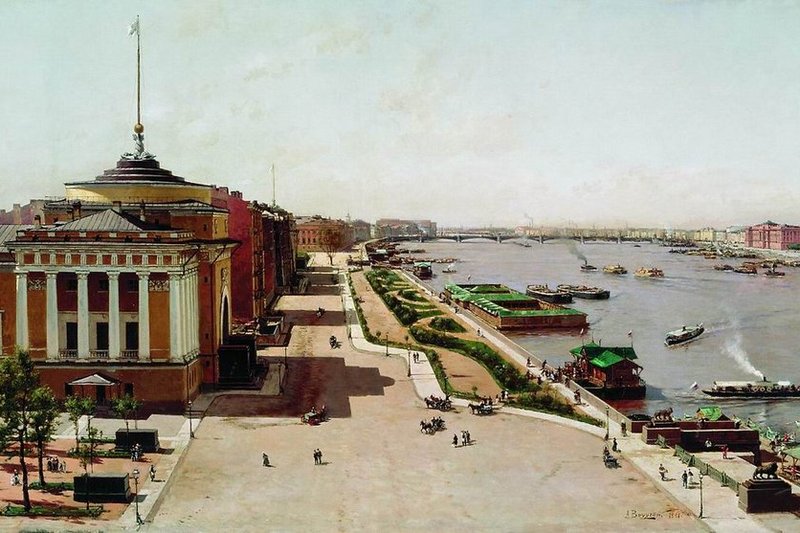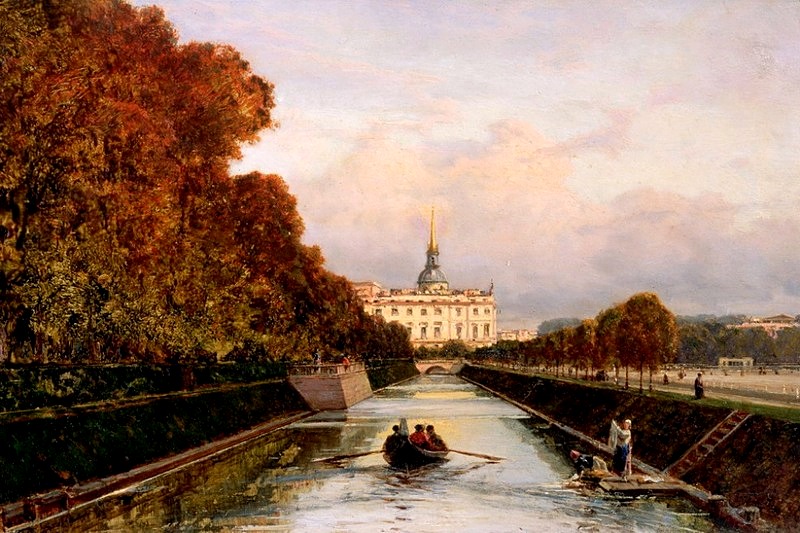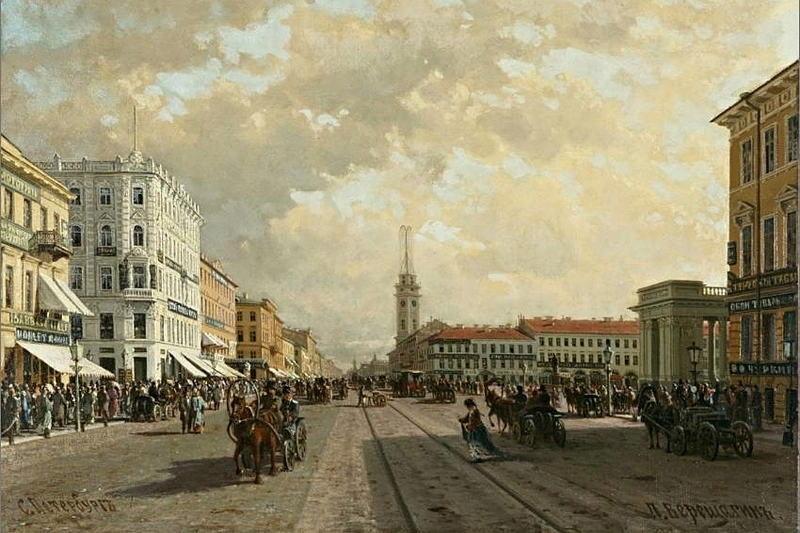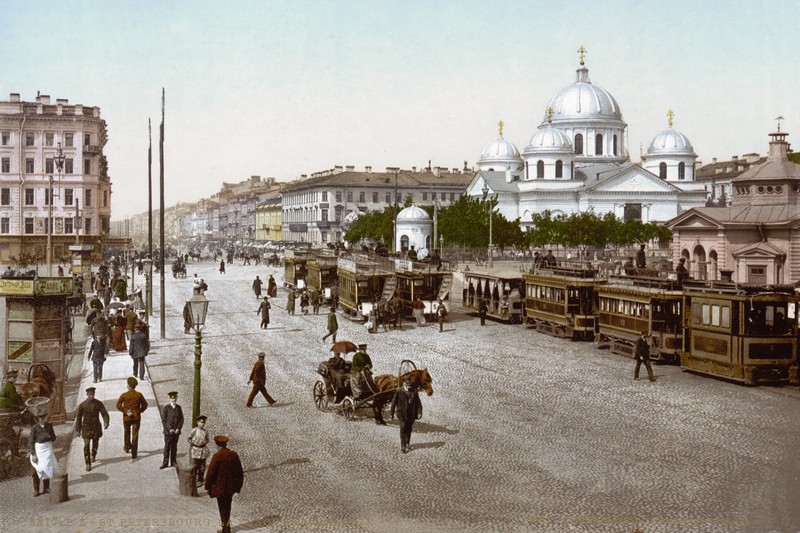St. Petersburg in the era of Alexander III (1881-1894)
The last decade of the nineteenth century was a period of massive industrial development, accompanied by a significant growth in the size of cities: by 1897, the population of Petersburg had reached 1.2 million people. Over the course of the 1880s and 1890s, the area of the city dramatically increased and a large number of apartment houses and industrial facilities were constructed which determined the appearance of entire areas of the city, but few iconic edifices were erected.

One significant structure of the epoch was the Church of Our Saviour on the Spilled Blood, built in memory of the late Alexander II (although the church was only completed in 1907, a decade after Alexander III's death). Another outstanding structure, the Baron Stieglitz Central School for Technical Drawing on Solyanoy Pereulok (now the Steiglitz Academy of Art and Industrial Design), was designed by the architect Maximillian Messmacher. The same Messmacher also designed a charming Revivalist palace for Grand Duke Alexey Alexandrovich (the Tsar's brother) on the banks of the Moyka River. And on the section of the Moyka opposite Palace Square, the beautiful Court Capella was built by Leon Benois. It remains famous to this day for its excellent acoustics. The Von Derviz mansion was built on the English Embankment, and at the beginning of the twentieth century it became the Palace of Grand Duke Andrey Vladimirovich.

On the Vyborg Side next to the Neva River, the enormous Kresty Prison, designed by the reforming architect Antony Tomishko, was the largest prison in Europe when opened in 1890, and equipped with electric lighting, ventilation systems and central heating it was a thoroughly modern and progressive facility. A hundred years later, however, it was infamous as the city's dismal, overcrowded pre-trial holding prison.
The growing population of St. Petersburg required accommodation, and as well as the workers' slums that grew up to the south of the Obvodny Canal, the city saw a boom in the construction of apartment buildings in the central neighborhoods, many of which, such as the Muruzi House on Liteyniy Prospekt, were architectural masterpieces and remain important landmarks to this day.

Although Alexander's reign was marked by its distinctly chauvinist tone and Jews in the Russian Empire had increasingly restrictive rules of employment and movement foisted on them by the Tsar, the Grand Choral Synagogue, permission for which had been granted by Alexander II, was completed and consecrated under Alexander III.
The City Regulations introduced by Alexander III played an important role in St. Petersburg, in that they constricted the electoral organs of the municipal power via the introduction of more stringent property qualifications and limited the powers of local government.

The memory of Alexander III is honored by a sculpture created by Paolo Trubetsky, which was originally placed in front of the Moskovsky Train Station on what is now Ploshchad Vosstaniya. Today this monument, depicting the massive monarch atop an equally massive horse, can be viewed in the courtyard of the Marble Palace, now a branch of the State Russian Museum. In the north of Petersburg, on the grounds of the Skvortsov-Stepanov Psychiatric Hospital near the Church of St. Panteleimon, a bust of Alexander III (restored in 2007) was installed. Established in 1895 and opened in 1898, the Russian Museum, which houses the world's most extensive collection of Russian art, was by order of Nicholas II christened The Russian Museum of Emperor Alexander III. His bust now stands on the Museum's main staircase (in the Mikhailovsky Palace).

